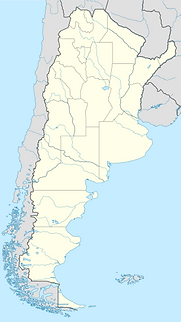




AIESEC LA PLATA

Contacto: diego.anorga@aiesec.net
Ciudad que fue pensada para ser la capital de la provincia de Buenos Aires desde sus comienzos, La Plata fue diseñada con anterioridad a su fundación. Ubicada en la región de la Pampa Húmeda, a sólo 55 km al sudeste de la Capital Federal por medio de la Autopista Buenos Aires-La Plata, es una ciudad con historia y tradición pero sobre todo con un marcado acento europeo.
Desde su trazado y diseño, cuya perfección geométrica ha sido elogiada por los más reconocidos urbanistas del mundo, pasando por los magníficos edificios públicos, hasta los innumerables espacios verdes, La Plata se erige como ejemplo de metrópoli bien planificada.
ntre los innumerables atractivos turísticos de La Plata sobresalen la Catedral de la ciudad, frente a la Plaza Moreno, con su estilo neogótico y con treinta y siete vitraux de origen francés y alemán; el reconocido Museo de Ciencias Naturales, considerado como el quinto en importancia en el mundo; y la bella y pintoresca "Ciudad de los Niños", el mayor emprendimiento infantil de Sudamérica.
Los visitantes que desean encontrarse con la naturaleza pueden conocer el Parque Pereyra Iraola, de 600 has de extensión, el Paseo del Bosque, donde se encuentran el Observatorio Astronómico y el Jardín Zoológico.
English description
Being a city which was thought as the Capital City of Buenos Aires Province from the very beginning, La Plata was designed before its foundation.
Located in the region of the "Pampa Húmeda", only 55 kilometers away from Buenos Aires City to the Southeast, you can get to it through Buenos Aires-La Plata Highway.
La Plata is a city with history and tradition but having a European style.
Through its layout and design (which geometrical perfection has been praised by the most well known city planners of the world), passing by the magnificent public buildings and the many green areas, La Plata stands as an example of well-planned Metropolis.
Known as the "City of Diagonals", the climate in this region is mild with an annual average temperature of 17 ºC with abundant humidity since it is a few kilometers away from River Plate.
You can also get to La Plata by train departing from Constitucion Railway Station or by car through Nº36 National Route or Nº11 Provincial Route.
As you go along the avenues, diagonals or streets, you will find a public square every seven blocks which act as green lungs for the city and as recreation places.
It is very important to highlight the diffrent architectural styles of the government buildings, especially the City Hall Building which has a German Renaisance style from 1886, the Government House and the Provincial Legislature Building.
Among the many touristic attractions of La Plata, the ones which outstand are the Cathedral -opposite Moreno Square- with a New Gothic style and its 37 French and German vitreaux; the very well known Natural Sciences Museum which is considered the fifth in importance in the whole world and the beautiful and picturesque "Ciudad de los Niños" (Children's City) which is the biggest undertaking for children in South America.
If you wish to be in contact with nature, you can visit Pereyra Iraola Park which has a surface of 600 hectares, the "Paseo del Bosque" (Wood Ride) where there is an Observatory and a Zoo.
A few kilometers away from the city center, you can enjoy Punta Lara beaches where you can enjoy the practice of jet skiing, windsurfing, sailing or spend a beautiful country day in one of the farms that offer agrotourism services.
La Plata offers a busy night life. You can go to the New Argentinian Theatre, Coliseo Podestá Theatre or Islas Malvinas Cultural Center.
Young people can go to modern discotheques located in the surroundings of the city center.